

|
 |
Evergreen AKA Ever Green
R2 - United Kingdom - Network Review written by and copyright: Paul Lewis (25th May 2009). |
|
The Film
  Musical star Jessie Matthews began her career as a chorus girl in London revues, before first acquiring a starring role on cinema screens in the 1931 film Out of the Blue (Gene Gerrard & J. O. C. Orton). Following her appearance in Out of the Blue, Michael Balcon signed Matthews to a two year contract with Gainsborough. Matthews’ association with Gainsborough would last until 1938, by which time she had starred in thirteen films for the company. In 1934, Matthews appeared in two films directed by Victor Saville, Evergreen and The Good Companions. These films marked the beginning of Matthews’ international stardom; following the success of Evergreen, Matthews was offered contracts by both MGM and RKO, who wanted Matthews to work with Fred Astaire. However, Matthews rejected both of these offers ‘due to personal problems and ill health’ (Street, 2002: 78): whilst filming Evergreen, Matthews almost suffered a nervous breakdown (see Macnab, 2000: 78). As a consequence, Matthews shunned Hollywood and continued to work within the British film industry.  Alongside the other musical films that Matthews’ made after 1934, Evergreen was deliberately designed to compete with Hollywood-produced musicals such as those by Busby Berkeley (at Warner Brothers) and the pairing of Fred Astaire and Ginger Rogers (at RKO). Evergreen’s iconic use of Art Deco sets was orchestrated to tap into American culture’s then-popular commercialisation of European designs, thus ensuring the film’s modish popularity in the American market (see Street, op cit.: 81). Discussing this aspect of Matthews’ films, Jeffrey Richards has claimed that Evergreen and Matthews’ six subsequent films were ‘Art Deco fantasies, taking place in a highly stylised, high contrast, hermetically sealed black and white world of ritzy nightclubs, luxury hotels, ocean liners, newspaper offices, radio studios, theatres and mansions, where vast floor spaces were polished to a preternatural brightness, chrome gleaned and angular metallic accoutrements spoke of the influence of modernism’ (Jeffrey Richards, quoted in Sedgwick: 173). A chief example of this modernist aesthetic is a dance number that takes place forty minutes into Evergreen, which via some montage editing that displays a debt to Soviet cinema (abstract close-ups of faces lunging at the camera, intercut with scenes of machinery) depicts Harriet and the dancers worshipping a giant piston that turns beautiful young women into robotic toy soldiers. However, despite the films’ attempt to emulate the style and pace of American musical films, in Transatlantic Crossings: British Feature Films in the United States Sarah Street asserts that ‘it was generally acknowledged that American musicals were faster paced’, and as a consequence ‘American reviewers often recommended the British films should be cut’ (ibid.: 79). 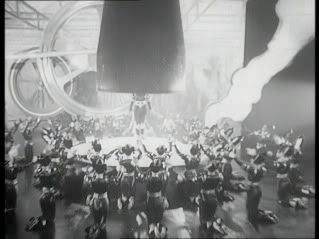 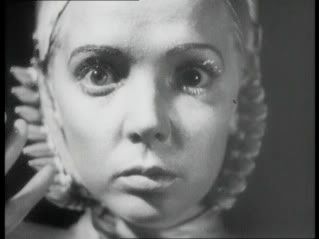 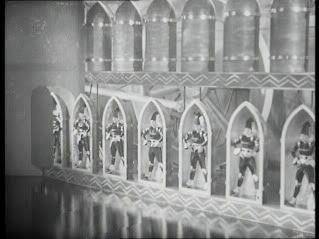 Based on Rodgers and Hart’s 1930 stage musical Ever Green, Evergreen is set in the milieu of the London music halls. The film opens with a flashback (a title card reads ‘Yesterday’): it is 1909, and Matthews plays Harriet Green, a popular and youthful star of the Edwardian music halls. The film opens with Harriet’s ‘farewell appearance’: Harriet is retiring from her career due to her impending marriage to the Marquis of Staines (Ivor Maclaren). However, the theatre staff are sceptical about Harriet’s retirement, asserting that ‘She’ll be back on the stage within two years’. 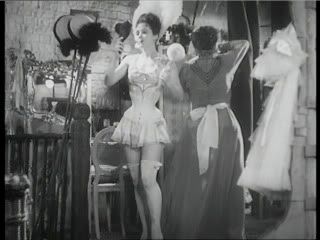 The pre-wedding festivities are cut short by the arrival of Harriet’s former lover, George Treadwell (Hartley Power). Harriet declares that she ‘thought it was too good to be true’. George attempts to blackmail Harriet over their illegitimate daughter, telling his former lover that ‘It’s a good thing I never married you, eh my love, or else this would be bigamy’. George suggests that he and Harriet could exploit Harriet’s wealthy fiancée, but fearing George’s intentions and the possibility that her affair with George will become public knowledge Harriet calls off her wedding.  An elliptical leap into the diegetic present (a title card reads ‘To-day’, and the period seems to be the early-1930s) finds Harriet’s daughter working as a chorus girl in London, a far cry from the stardom her mother enjoyed in her youth. The younger Harriet has been working under the stage-name of Harriet Hawk. However, some of Harriet’s colleagues notice her resemblance to her mother and infer that Harriet is the daughter of Harriet Green. Harriet’s talent is fostered by the theatre manager Leslie Benn (Sonnie Hale), who has been looking for an attraction to bolster the flagging audiences at his theatre: the manager persuades Harriet that she must fraudulently impersonate her mother – in other words, perform on stage as Harriet Green. However, matters become more complicated when George returns on the scene, asserting himself to be Harriet’s long-lost husband (and the younger Harriet’s father) before proceeding to blackmail his own daughter. At the same time, the Marquis of Staines has returned and begins to romance the younger Harriet, apparently genuinely believing her to be her mother. Meanwhile, Harriet becomes romantically involved with her publicity agent Tommy Thompson (Barry Mackay), who is masquerading as her son. 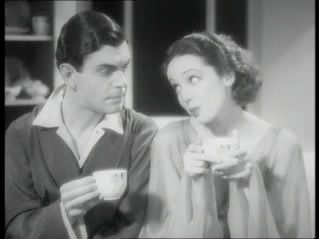 Matthews displays her musical prowess in several numbers, including ‘Daddy Wouldn’t Buy Me a Bow-Wow’ and ‘Dancing on the Ceiling’. Evergreen is also arguably the best showcase for Matthews’ talent for dancing. However, the film’s odd suggestions of incestuous desire (the Marquis’ budding relationship with his former lover’s daughter; George’s lascivious approaches to his own illegitimate daughter; Tommy’s masquerade as Harriet’s son, which masks his sexual desire for Harriet) seem curiously at odds with the light-heartedness of the delivery: there’s the strange hint of an abortive subtext bubbling under the song-and-dance surface of this picture. 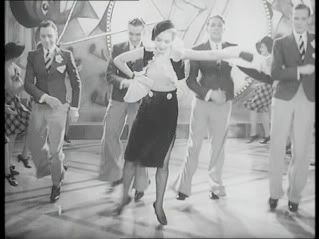 The film is uncut and runs for 89:55 mins (PAL).
Video
The image is quite stable: the film suffers from some minor wear, but on the whole the image quality is more consistent than that of Network’s release of There Goes the Bride. 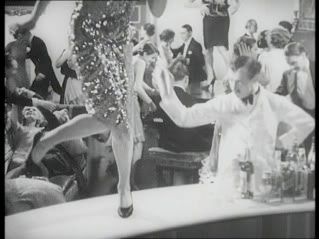
The film is presented in its original Academy screen ratio of 1.33:1.
Audio
Audio is presented via a two-channel mono track, which is always audible. There are no subtitles.
Extras
The disc contains an image gallery (1:35).
Overall
The consensus suggests that Matthews’ later films are stronger than her earlier pictures, although I’m not so sure. Watching Evergreen back-to-back with There Goes the Bride (reviewed here), I have to express a perverse preference for the earlier film: Evergreen is almost too studied and too much like an American musical, which is not to say that it’s not an enjoyable film – but that it has a curiously mid-Atlantic flavour. Matthews is very good here though, and her musical talents really shine in this particular film. The montage sequence outlined above is one of the film’s highlights: it’s a technical marvel and stands out in a film that is otherwise very ‘seamless’ in its aesthetic. The strange relationships between the characters leave something of a sour taste in the mouth though, and almost certainly wouldn’t have found their way into a contemporaneous Hollywood musical. References: Macnab, Goeffrey, 2000: Searching for Stars: Stardom and Screen Acting in British Cinema. London: Continuum Sedgwick, John, 2000: Popular Filmgoing in 1930s Britain. University of Exeter Press Street, Sarah, 2002: Transatlantic Crossings: British Feature Films in the United States. London: Continuum For more information, please visit the homepage of Network DVD.
|
|||||

|